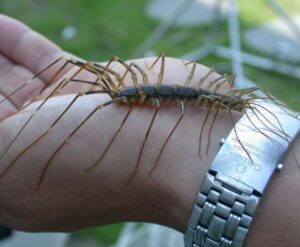If you come across a house centipede inside your home, it is advisable not to kill it

Yes, those fast-moving, multi-legged creatures that often send chills down your spine actually play a helpful role inside your home. While they might look intimidating, there’s more to house centipedes than meets the eye. After reading this article, you might reconsider your approach the next time you spot one of these critters scurrying across your bathroom floor.
House centipedes can certainly be unsettling to look at, with their long legs and swift movements. But these seemingly scary creatures are actually working to keep your home free of other pests. House centipedes are nature’s built-in pest control, helping to eliminate a wide range of unwelcome guests, including cockroaches, spiders, silverfish, bedbugs, and ants. In fact, their appetite for other arthropods is what makes them so valuable in your home. With around 20 legs, these small but efficient hunters have a knack for catching and consuming just about any small insect they come across.
Of course, this doesn’t mean you should start welcoming centipedes into your home in large numbers. But if you come across one or two, you might want to think twice before reaching for the bug spray. Instead, consider leaving them alone or gently relocating them outside as a way of saying “thanks” for their efforts in keeping your home pest-free.
While house centipedes may cause a moment of panic, especially for children or those who are squeamish, it’s worth noting that they’re generally harmless to humans. They don’t spread germs like some insects, nor are they strong enough to cause significant harm. In fact, their delicate bodies make them more vulnerable than menacing. Their primary goal is to hunt other pests, not to cause you any trouble.
In summary, while your first reaction to a house centipede might be to get rid of it, it’s worth considering its role in managing other pests. While some insects pose serious health risks, house centipedes are generally helpful, non-threatening creatures that contribute to a healthier home environment. So, the next time you spot one, remember that it’s more of a friend than a foe.





